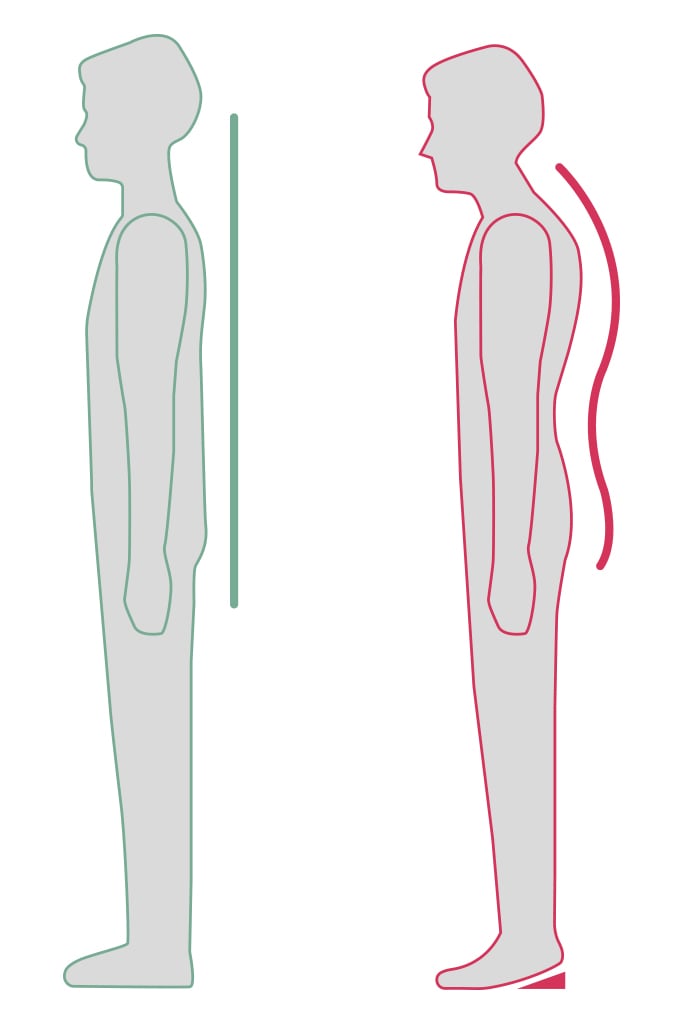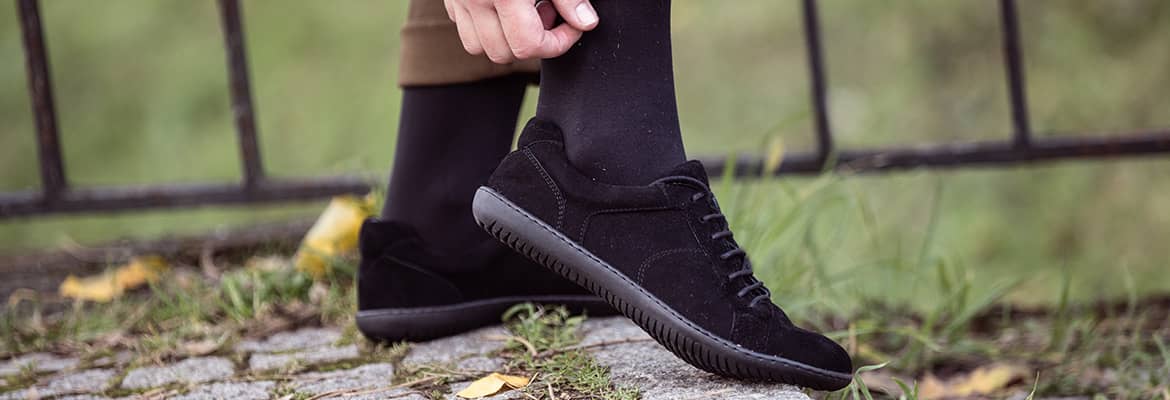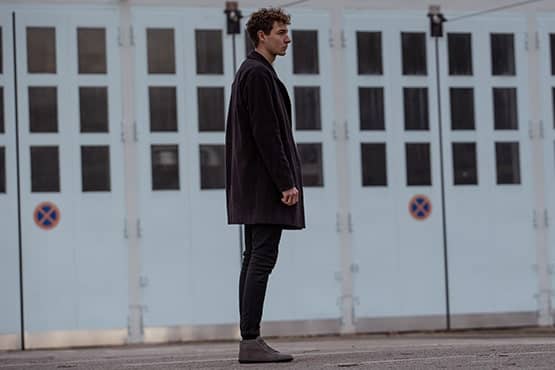Keeping your feet firmly on the ground: Zero drop
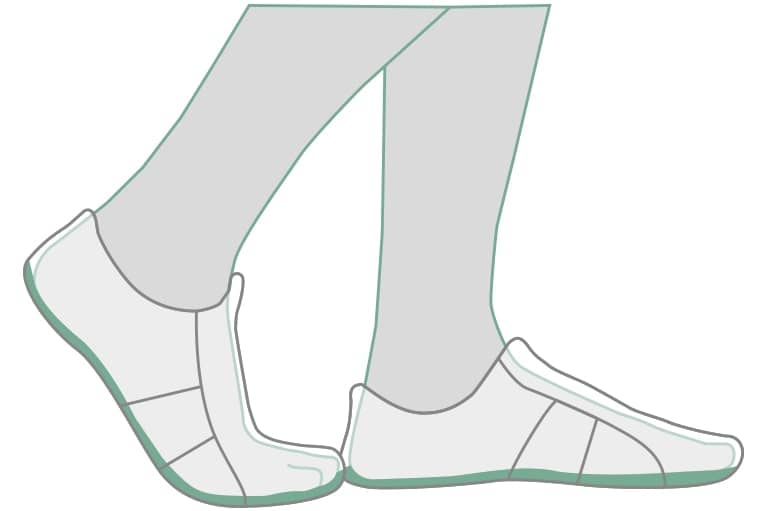
A feature that distinguishes barefoot shoes from "normal" shoes is the thin and completely flat sole. Barefoot shoes deliberately skip the heel drop. Heel drop refers to the difference in height between the heel and the forefoot. In contrast, almost all conventional shoes have an elevated heel - not only women’s high heels, but also everyday shoes for men just like most running shoes.
So why is this bad? The heel drop leads to an unnatural pressure on the forefoot: while only 10% of the body weight is on the forefoot and toes when walking barefoot, an elevated heel leads to a weight shift. The forefoot is subjected to excessive strain, and the weight causes the toes to move much less freely. This load on the forefoot will often lead to an unnatural and tense posture. The body feels as if it is permanently walking downhill. Everyone who has ever hiked in the mountains knows how strenuous this posture is for muscles, shins, knees and joints.
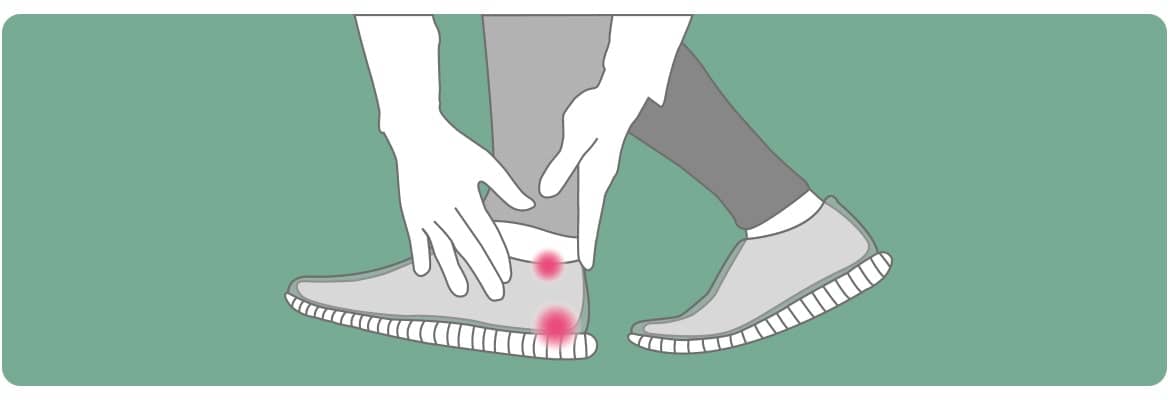
Walk like barefoot
That's why we've designed our TrueSense® barefoot sole without any cushioning or heel elevation. This way GROUNDIES® allow for a completely natural posture. You stand flat on the ground, almost like barefoot. Feet and legs as well as your spine are in a natural and upright position. The advantage: Your body can fully perform its natural movements and functions. Walking in shoes without heel drop is easy on the joints, tendons and the back.Please note: If you are used to conventional shoes with cushioning and an elevated heel, you should slowly start changing to barefoot shoes. You should give your feet time to recover from the unbalanced and unnatural strain. Wear your GROUNDIES® barefoot shoes initially only on days when you don't have to walk long distances. With time you will feel the difference and fully enjoy the new feeling.
